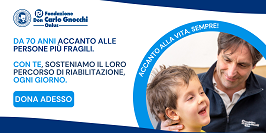Databases
Services
Submit
Restricted area
Assessment and certification of assistive devices
Record number: 129
Last update: October 2019
Type of document: Lectures
Last update: October 2019
Type of document: Lectures
Author: Andrich R
Editorial data: Dispense Corso di Alta Formazione "Ausili per l'Autonomia e la Partecipazione". Associazione La Nostra Famiglia IRCCS E.Medea
Year of publication: 2019
Abstract:
The lecture provides a general framework for assistive technology assessment. The first part discusses various aspects of functional and technical assessment, such as safety, quality, functionality, usability, referring to regulations and certification standards issued by national (UNI), international (ISO) and European (CEN) standadization Bodies. Some assessment checklists are described, such as the 17 criteria proposed by A.Batavia and G.Hammer (1990), the 7 criteria proposed by the European Institute on Design and Disability (1998) and the European handbook USERFIT (1996). In the second part, the lesson discussed the fundamentals of individualized assessment, based on three concepts: competence (whether the assistive solution achieves the goals) reaches the target), consonance (whether the user is comfortable with it) and contextuality (whether it fits the context). In the third part, the lesson investigates socio-economic aspects, such as effectiveness (objectives achieved), usefulness (user-perceived value) and cost-efficiency.
The lecture provides a general framework for assistive technology assessment. The first part discusses various aspects of functional and technical assessment, such as safety, quality, functionality, usability, referring to regulations and certification standards issued by national (UNI), international (ISO) and European (CEN) standadization Bodies. Some assessment checklists are described, such as the 17 criteria proposed by A.Batavia and G.Hammer (1990), the 7 criteria proposed by the European Institute on Design and Disability (1998) and the European handbook USERFIT (1996). In the second part, the lesson discussed the fundamentals of individualized assessment, based on three concepts: competence (whether the assistive solution achieves the goals) reaches the target), consonance (whether the user is comfortable with it) and contextuality (whether it fits the context). In the third part, the lesson investigates socio-economic aspects, such as effectiveness (objectives achieved), usefulness (user-perceived value) and cost-efficiency.
Downladable documents:
- Slides: Certificazione e valutazione tecnico-funzionale degli ausili File format: pdf (3,428 KB)
- Dispensa (2 slides/pagina): Certificazione e valutazione tecnico-funzionale degli ausili File format: pdf (654 KB)
ISO/SIVA codes related to this document (click on the list items to see the other documents related to the selected code):








